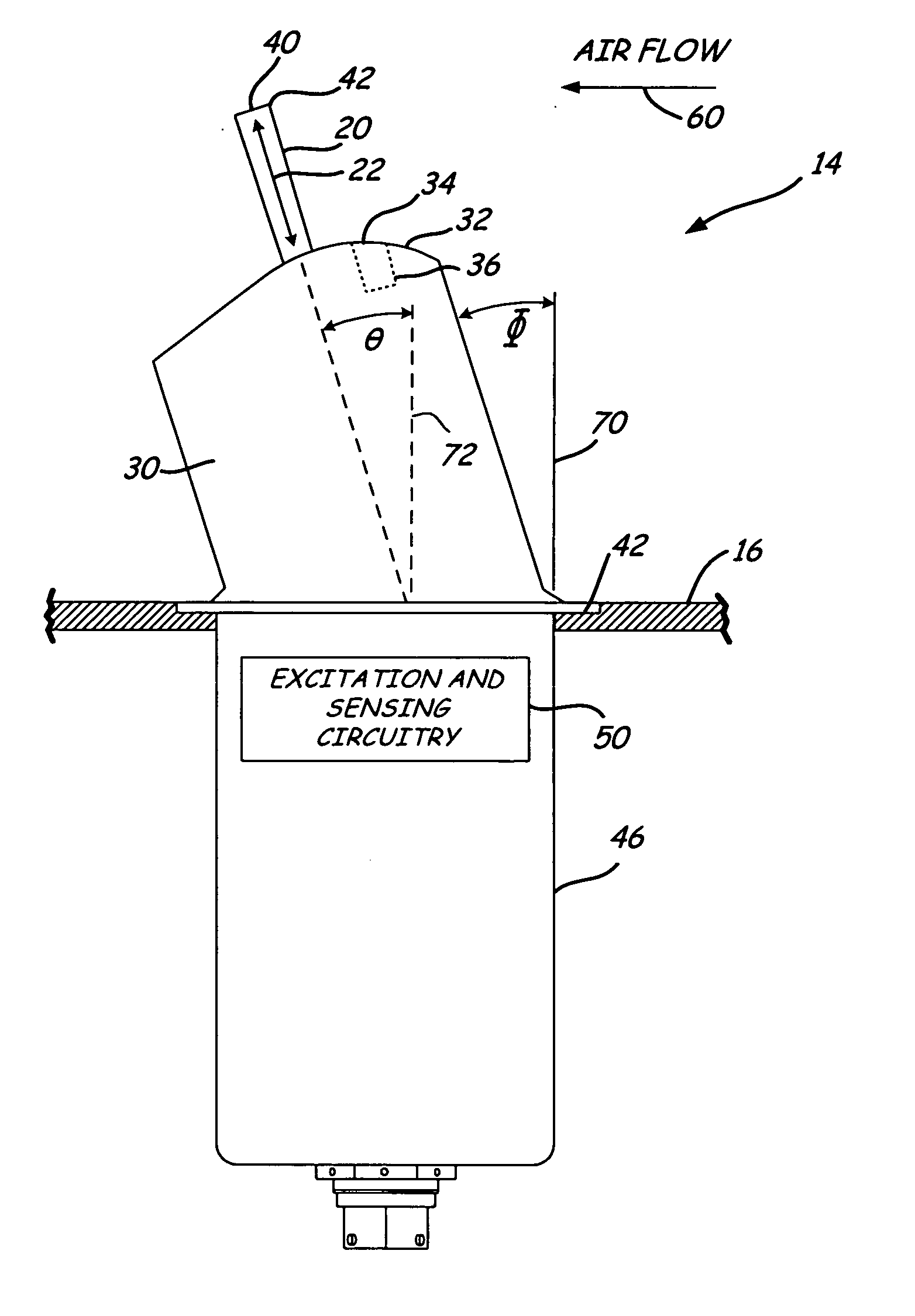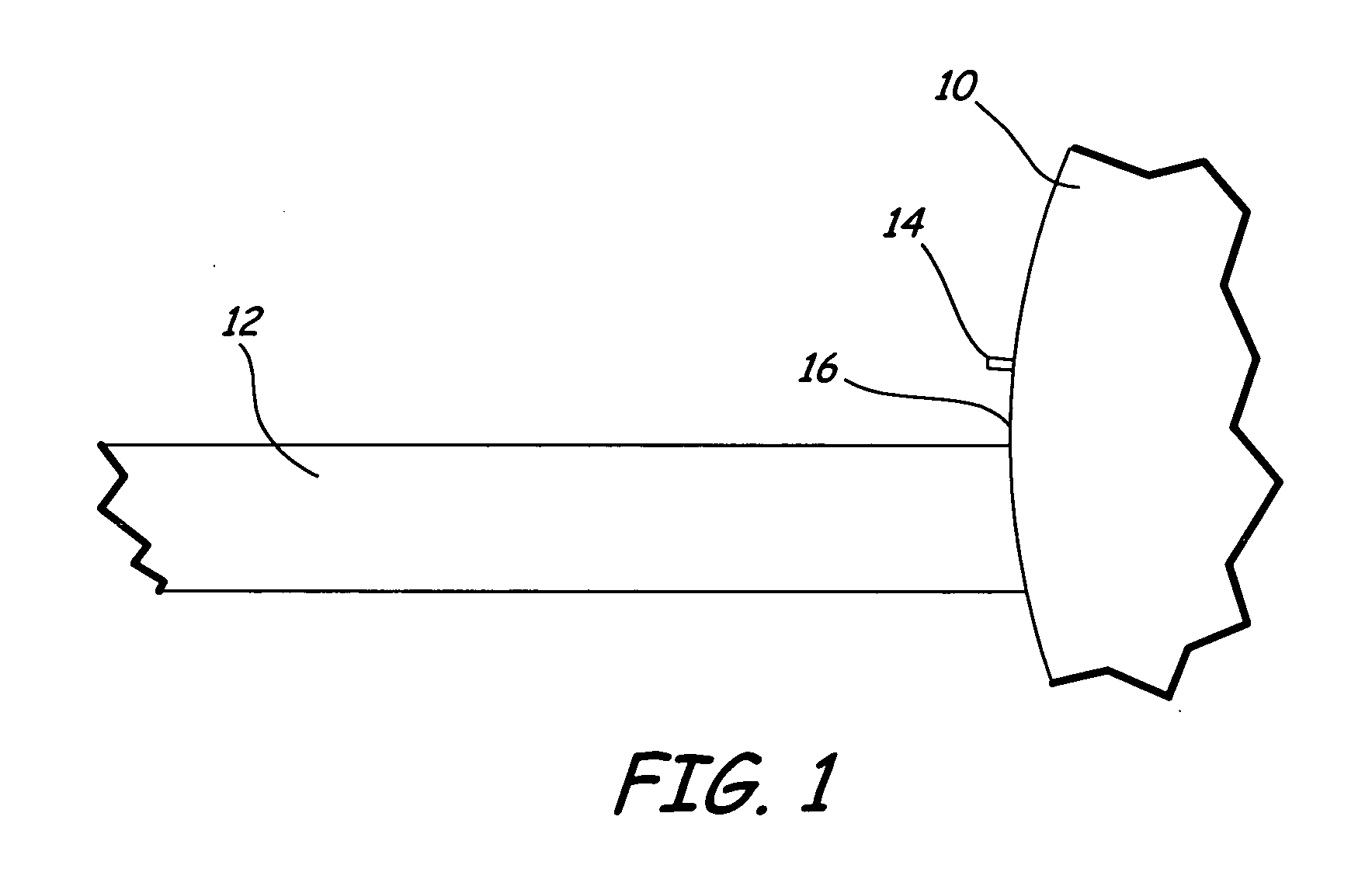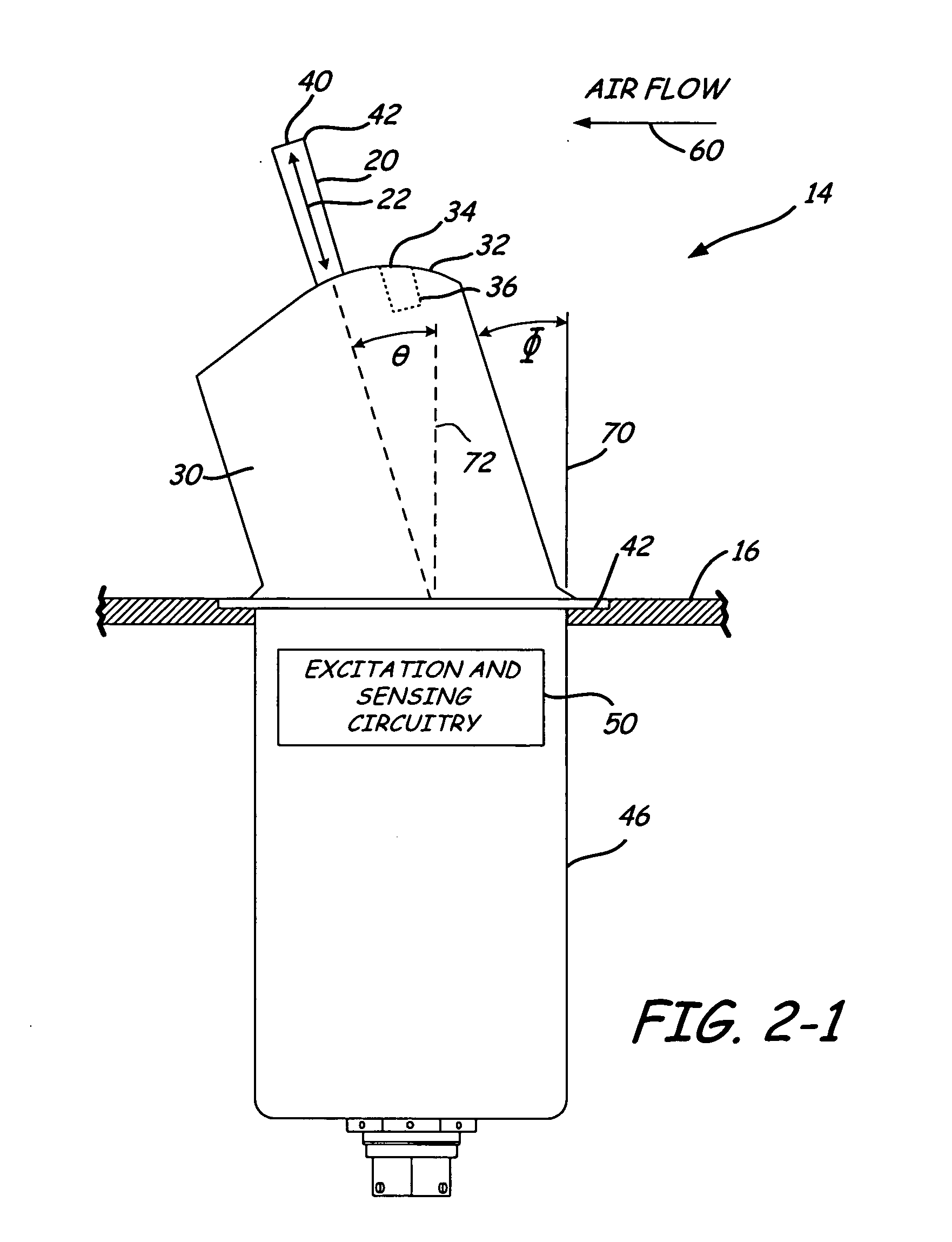Ice detector for improved ice detection at near freezing condition
a technology of ice detector and near freezing condition, which is applied in the direction of de-icing equipment, alarms, instruments, etc., to achieve the effect of improving ice detection, decreasing and reducing the temperature of the prob
- Summary
- Abstract
- Description
- Claims
- Application Information
AI Technical Summary
Benefits of technology
Problems solved by technology
Method used
Image
Examples
Embodiment Construction
[0020] In FIG. 1, a typical aircraft indicated at 10 is of conventional design, and includes an airfoil cross-section shaped wing 12. An ice detector probe assembly 14 (ice detector 14), made according to the present invention, is supported on the skin or outer wall 16 of the aircraft. The ice detector 14 is positioned relative to the wing 12 at a known location that is selected to provide for detection of ice as air flows past the wing and the aircraft skin 16.
[0021]FIGS. 2-1 through 2-3 illustrate an embodiment of the ice detector 14 in accordance with the present invention. As shown, ice detector 14 includes a generally cylindrical probe 20 mounted onto a strut 30. Strut 30 is fixed to a mounting flange 42, which is supported by the aircraft skin 16 (not shown in FIGS. 2-2 and 2-3). A housing 46, typically located on the interior of the aircraft below skin 16, houses suitable excitation and sensing circuitry illustrated generally at 50, which is of conventional design.
[0022] As...
PUM
 Login to View More
Login to View More Abstract
Description
Claims
Application Information
 Login to View More
Login to View More - R&D
- Intellectual Property
- Life Sciences
- Materials
- Tech Scout
- Unparalleled Data Quality
- Higher Quality Content
- 60% Fewer Hallucinations
Browse by: Latest US Patents, China's latest patents, Technical Efficacy Thesaurus, Application Domain, Technology Topic, Popular Technical Reports.
© 2025 PatSnap. All rights reserved.Legal|Privacy policy|Modern Slavery Act Transparency Statement|Sitemap|About US| Contact US: help@patsnap.com



